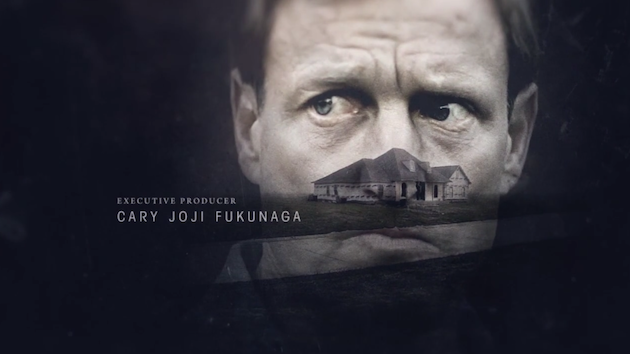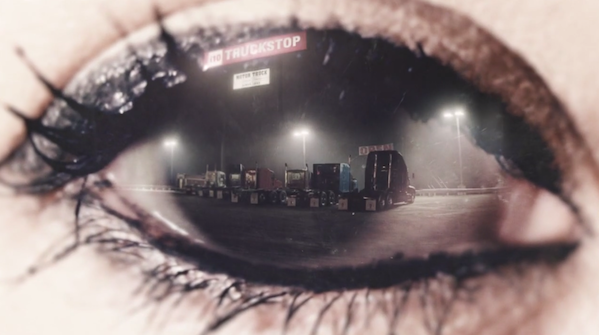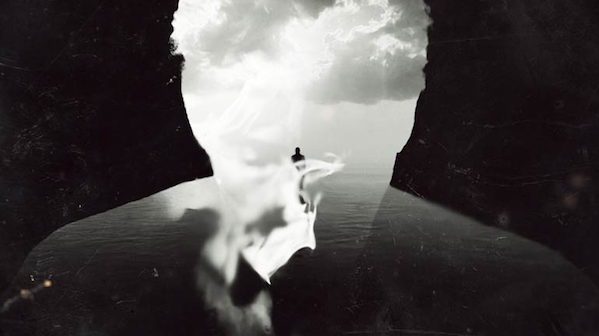Setting a Complex Scene with Layered Narrative, Emotion, Character and Landscape
In HBO's breakout winter hit, True Detective, helmed episode-to-episode by film director Cary Joji Fukunaga (Sin Nombre, Jane Eyre) and novelist/screenwriter Nic Pizzolatto, metaphysics, metafiction and true crime become strange yet cozy bedfellows. With the season hurtling toward its end this Sunday, the layered opens created by Australian filmmaking collective Elastic are taking on a whole new meaning. We asked title sequence director Patrick Clair how he and Elastic producer Jennifer Sofio Hall, through his creative studio Antibody, worked with Pizzolatto and Fukunaga to create a moody, evocative palimpsest at once specific and obscure.
StudioDaily: How many episodes did you read before you pitched for the project?
Patrick Clair: I read three scripts, which all demonstrated the slow, quiet and tense storytelling that is also deeply engaging and economical.
Were you briefed by creator/writer/showrunner Nic Pizzolatto and director Cary Fukunaga during the pitch?
Yes. The team had a clear idea of the symbols they were working with, and the journey we needed to foreshadow for the characters. They also shared with us some of the photographs (by Richard Misrach) that inspired how the production team selected the locations and the way they filmed the location and time periods.
How specifically did Pizzolatto's writing inspire your titles?
Nic's writing is shockingly good. His dialogue is both expressive and artful while remaining totally believable. His structural choices are always surprising but devastatingly effective. Creating images to go with such audacious writing was both thrilling and intimidating, but I would say that it encouraged us to be ambitious and daring with the creative choices we faced.
Where did the concept of double exposures and layered composites come from? Was it inspired by any particular artist or photographer?
I've loved double exposures for years, and there's many talented photographers and artists working with this technique. My personal favorite is Dan Mountford, a young designer from Brighton. Dan is still wrapping up his studies, but I sincerely hope he'll collaborate on some projects with us once he's graduated.
The black and white images start by being very transparent and washed out, then get increasingly saturated and dark, until full-color fire ignites the entire thing. What's driving this progression?
Religion is very present in the show, and this sense of an impending personal apocalypse was what motivated us to make the fire such a key element. The show's first scene is fire, and it really ignites the story from there.
Where did the final images used in the titles come from?
All over. We scoured the Internet for amazing photography and there is a long list of talented photographers—some amateur, some seasoned pros—that I owe a great debt of gratitude to for allowing us to manipulate their images. In one case, we hunted an S&M photographer from Russia down through Facebook, so that we could use his nude images of spiked heels. It was the most diverse visual research process that we've ever undertaken.
There's obviously a lot more going on with these animated titles than simple 2D compositing. How did you make the images and video work in 3D space?
My resident technical wizard and lead designer Raoul Marks was to thank for that. We knew we wanted to make photos come alive in a subtle yet sophisticated work. Under Raoul's design guidance, our 3D team worked tirelessly, mostly in After Effects, to create 3D landscapes and characters, and texture them organically, to add just tiny yet crucial movements to the final renders.
How different is the final cut from your original storyboard?
Surprisingly, very close. Every step of the way Cary and Nic pushed us to realize what was strong about our final vision. They are both amazing individuals to work with and share a rare combination of singular creative visions matched with a strong belief in collaboration.
Did you know the ending when you created the titles, and (don't blame me for trying) is it hinted at in those opening images?
Well, I couldn't really speak to that; people will just have to watch the show and figure out for themselves!
Crafts: Editing Post/Finishing VFX/Animation
Sections: Creativity
Topics: Project/Case study Cary Fukunaga Dan Mountford Elastic HBO Nic Pizzolatto Richard Misrach True Detective
Did you enjoy this article? Sign up to receive the StudioDaily Fix eletter containing the latest stories, including news, videos, interviews, reviews and more.














Leave a Reply